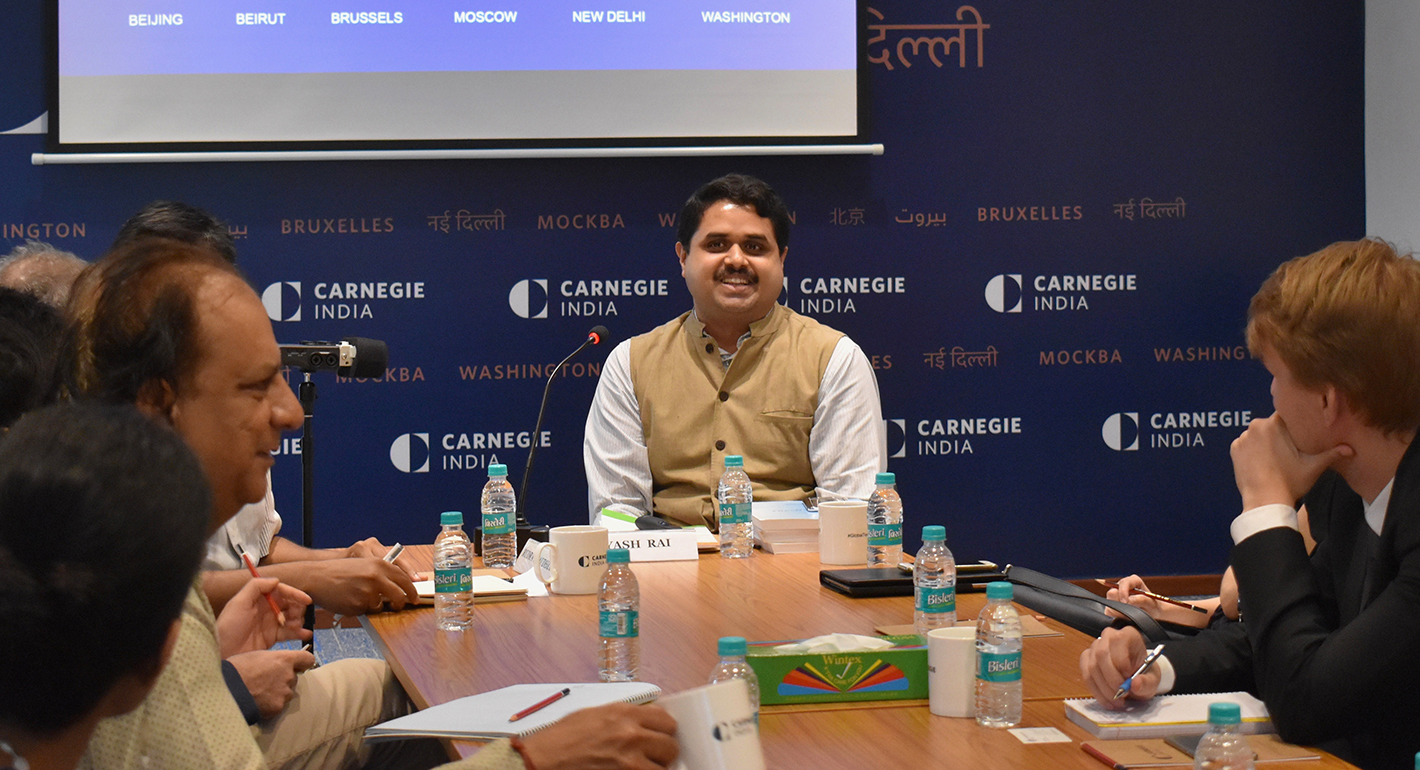Biotechnology has great potential in India, especially given that cutting-edge product development and research is underway, despite a nascent market and industry in the country. While India has taken some steps to encourage biotechnology research and its commercial applications, inefficiencies in the country’s regulatory system, and political opposition to biotechnology—spawned by public misgivings, safety, security, and ethical concerns—have constrained the sector’s economic potential. Addressing such regulatory shortcomings and political hurdles can help India benefit from new technical capabilities, become a more competitive economic player, and a more influential international actor in this rapidly changing field.
During the Global Technology Summit 2018, Carnegie India hosted Taslimarif Saiyed, chief executive officer and director of the Centre for Cellular and Molecular Platforms (C-CAMP), to conduct a student workshop on “Biotechnology Research: Balancing Safety and Innovation.” The workshop highlighted the major contributions of biotechnology to research, medicine, public health, and agriculture. It also identified the key safety, security, and ethical challenges faced by two key areas—bio-pharmaceuticals and bio-agriculture—in driving growth in the biotechnology sector in India.
DISCUSSION HIGHLIGHTS
- Stem Cell Research in India: In recent years, stem cell research has improved human health by restoring the function of cells and tissues that have been damaged due to degeneration or injury. Participants noted that while these technologies are increasingly being adopted around the world, in India, due to certain unscientific or unethical stem cell therapies, any type of stem cell use in patients, other than that of hematopoietic stem cell transplantation for approved conditions, is investigational at present.
- Role of Vaccines in India: Most vaccine institutes in India were set up through the 20th century, stated participants. Though the pattern moved from public to private vaccine manufacturing units, the country has retained self-sufficiency through indigenous production. Smallpox has been eradicated and the country is polio free since January 2011. In spite of all these positive changes, a major challenge is sub-optimal investments for vaccine research for rare diseases in India. So-called orphan diseases do not harm enough people to create sufficiently lucrative markets to motivate companies or governments to invest resources to develop vaccines (or treatments) for them. Some participants noted that pooling of state resources and efforts would seem to be necessary. Other participants explained, a lack of scientific dialogues and inadequate public outreach has led to the growing anti-vaccination sentiments in the country which undermines not only interest in developing vaccines for orphan diseases, but also interest in vaccinating people for diseases that can be quite widespread. This could pose a major threat to global health, they stated.
- Scope for Gene Editing: Participants highlighted, several research laboratories in India are trying to establish preclinical studies to examine the use of gene editing tools to treat genetic disorders like sickle cell anaemia and haemophilia. However, recent uproar over Chinese researcher He’s experiment has called into sharp contrast the incredible potential and possible pitfalls of gene editing, discussed participants. Since the CRISPR-Cas9 technology has the power to change the genetic make-up of an organism, the possibility of off-target effects and mosaicism still remains major impediments in the process of translation of such clinical therapies. While scientists worldwide have highlighted the biosafety and biosecurity implications of the technology, participants underlined the lack of an appropriate framework to regulate CRISPR-Cas9 based gene editing trials in India.
- Bio-agriculture: Genetically modified (GM) seeds have emerged as a powerful new technology that promises high productivity, improved quality, and lower use of fertilizers, weedicides, and insecticides. Bt cotton is the only GM crop currently approved for production and commercialization in India, noted participants. The imposition of moratorium on the release of Bt Brinjal or GM mustard in India highlights an incomplete and somewhat skewed societal understanding of biotechnology and its consequences. While other South Asian nations, like Bangladesh, have allowed the cultivation of Bt brinjal, based on Indian biosafety assessments, lack of adequate public engagement efforts and a bureaucratic regulatory structure in India have limited the scope of GM products in the country.
- Way Forward for India: Participants noted, India’s relatively underdeveloped efforts to promote biotechnology research to improve human health and agriculture in the country. They emphasized the need to set up a more streamlined, well-resourced regulatory system with a supportive political environment. Conducting public awareness campaigns in print and electronic media, and conducting national biotechnology conferences to discuss advances in the field may aid with increasing the public discourse on such issues.
This event summary was prepared by Nikhil Sahai, an intern at Carnegie India.
